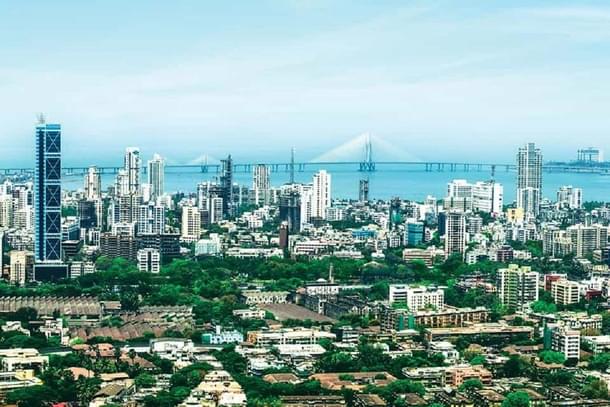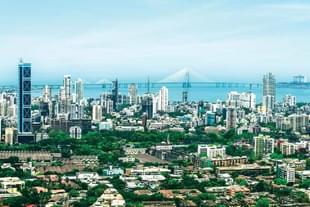News Brief
Mumbai's Infrastructure Leap: Major Projects Set To Transform The City In 2025
Arjun Brij
Jan 02, 2025, 11:32 AM | Updated 11:32 AM IST
Save & read from anywhere!
Bookmark stories for easy access on any device or the Swarajya app.


Over the past decade, Mumbai has witnessed a surge in construction activities, with several major infrastructure projects being implemented simultaneously.
As the city moves into 2025, some long-awaited projects are finally nearing completion, promising to alleviate congestion and enhance connectivity.
In 2024, Mumbai saw significant progress with the inauguration of landmark projects such as the Atal Setu, India’s longest sea bridge, and the western coastal freeway.
These developments are expected to ease traffic in parts of the city, a trend likely to continue in 2025 with the completion of more transformative projects.
The much-delayed Navi Mumbai International Airport, initially conceived in 1997, is set to be inaugurated in April 2025 and will commence commercial operations by May.
Adani Airport Holdings Ltd CEO Arun Bansal confirmed the timeline after a successful trial landing of a commercial aircraft.
Earlier in December, the Airports Authority of India validated the Precision Approach Path Indicator system, essential for guiding pilots during landing. In October, the Indian Air Force’s C295 aircraft conducted a trial landing at the site.
The airport will initially operate with a single runway and a terminal building (T1) capable of handling 2 crore passengers annually. Once fully developed, it will feature two parallel runways and taxiways spaced 1,550 metres apart.
Delays in site selection, environmental clearances, and pre-development work, including hill cutting and river diversions, had stalled progress. Prime Minister Narendra Modi laid the foundation stone in 2018, with construction commencing in 2021.
In 2024, Mumbai inaugurated the first phase of its underground Metro, the Colaba-Bandra-Seepz Metro, also known as Metro 3.
The 12.69 km stretch from Bandra Kurla Complex to Aarey Colony marked a significant milestone for the city.
By March 2025, the Mumbai Metro Rail Corporation (MMRC) aims to operationalise the line up to Acharya Atre Chowk in Worli, with the entire 33.5 km corridor to Cuffe Parade expected to be completed later in the year.
An MMRC official stated that most of the work is done and just the finishing touches remain—like work on some stations and systems testing formalities.
The project, initiated in 2016, faced delays due to controversies, particularly over the location of the car depot at Aarey Colony, which led to protests in 2019. The issue also became a political flashpoint between the Shiv Sena and the BJP.
The final stretch of the 701-km Nagpur-Mumbai Samruddhi Mahamarg is expected to open in early 2025, connecting Igatpuri in Nashik to Amane in Thane district.
Once completed, the expressway will reduce travel time between Mumbai and Nagpur to approximately eight hours, down from 16 hours.
The first phase of the expressway, spanning 520 km from Nagpur to Shirdi, was completed in December 2022, with subsequent stretches opened gradually. The project, initiated in 2019, was spearheaded by BJP leader Devendra Fadnavis during his tenure as Chief Minister.
The Maharashtra State Road Development Corporation (MSRDC) is working to complete the ‘missing link’ on the Mumbai-Pune expressway in 2025. This project aims to alleviate congestion on the heavily trafficked route, particularly at the Lonavala ghat section.
The project involves constructing two tunnels and two bridges, which will reduce travel time on the expressway by at least 30 minutes. Despite significant progress, MSRDC officials have refrained from setting a definitive completion date, citing ongoing work on a critical viaduct.
In 2025, a new southbound bridge along Thane Creek is expected to open, complementing the northbound bridge that was inaugurated in October 2024. These bridges are vital connectors between Mumbai and Navi Mumbai.
The original two-lane bridge, constructed in 1973, has been closed for over two decades due to structural concerns. The second bridge, built in 1997, currently bears the brunt of traffic but often faces congestion as vehicles from the 10-lane Sion-Panvel highway merge into its six lanes.
The new twin bridges, proposed in 2012 but only initiated in 2020, aim to streamline traffic flow and enhance connectivity.
From improved air travel at Navi Mumbai Airport to reduced travel times on major expressways and enhanced urban connectivity through the Metro, these developments mark a significant step forward in addressing the city’s growing demands.
Also Read: Rural Development Ministry Targets Sanctioning 10 Lakh Houses Under PMAY-G In January
Arjun Brij is an Editorial Associate at Swarajya. He tweets at @arjun_brij





